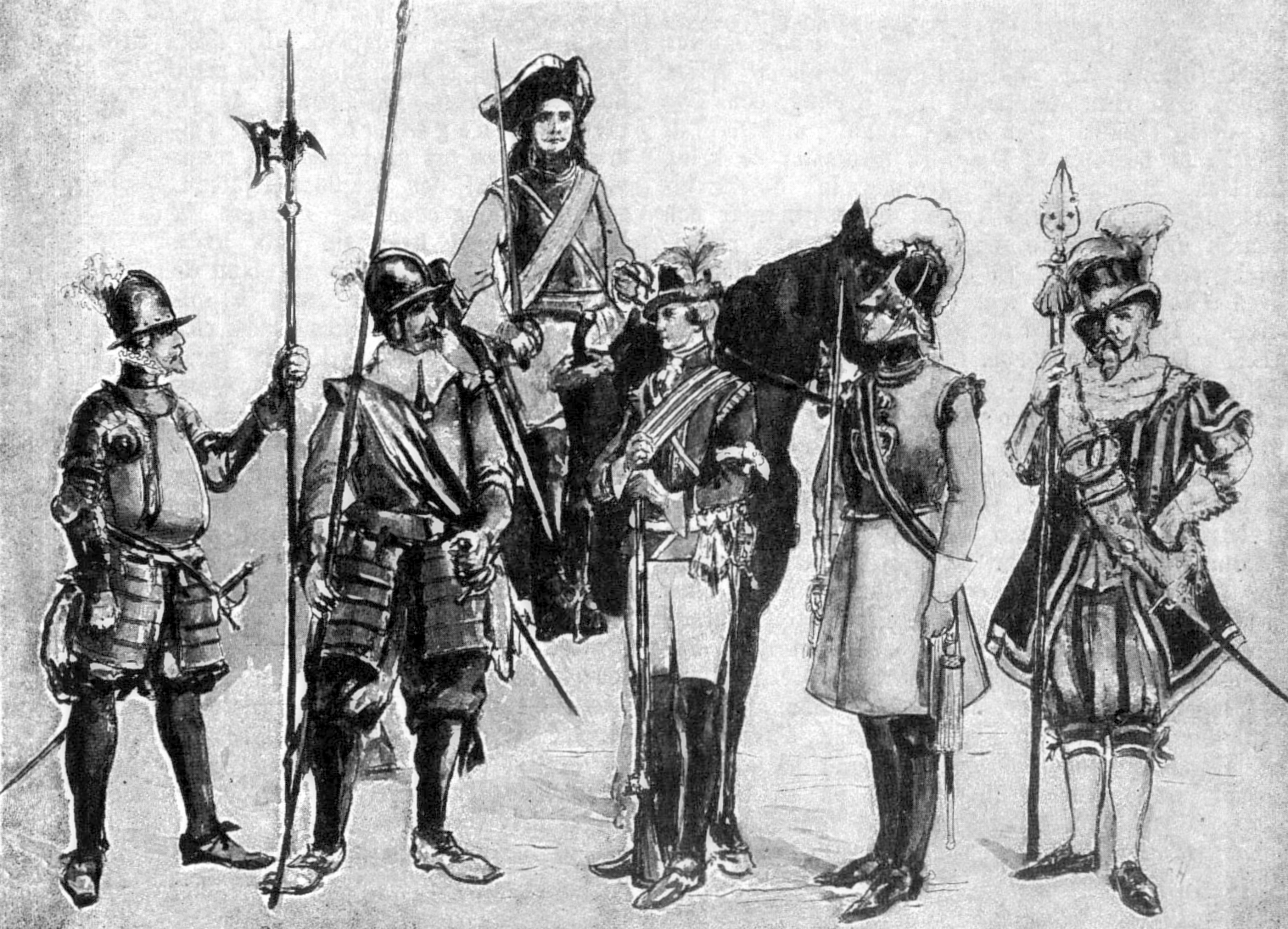Trabant (military) on:
[Wikipedia]
[Google]
[Amazon]

 A trabant (Ital. ''trabanti'', from the German ''traben'', Lat.: ''satellites'') was a historical name for an attendant or a
A trabant (Ital. ''trabanti'', from the German ''traben'', Lat.: ''satellites'') was a historical name for an attendant or a
Meyer's ''Großes Konversations-Lexikon''
Entry in the public domain in Brockhaus
Military units and formations of antiquity Military units and formations of the Middle Ages Warfare of the Middle Ages Trabant

 A trabant (Ital. ''trabanti'', from the German ''traben'', Lat.: ''satellites'') was a historical name for an attendant or a
A trabant (Ital. ''trabanti'', from the German ''traben'', Lat.: ''satellites'') was a historical name for an attendant or a lifeguard
A lifeguard is a rescuer who supervises the safety and rescue of swimmers, surfers, and other water sports participants such as in a swimming pool, water park, beach, spa, river and lake. Lifeguards are trained in swimming and CPR/ AED first a ...
, especially in the Middle Ages, who usually travelled on foot (as opposed to horseback).Meyers Großes Konversations-Lexikon The role of a ''trabant'' was to protect a member of the aristocracy, a senior official or a senior '' Landsknecht'' officer, or to carry out their orders. For a long time it was customary for them to dress in short white hose
A hose is a flexible hollow tube designed to carry fluids from one location to another. Hoses are also sometimes called ''pipes'' (the word ''pipe'' usually refers to a rigid tube, whereas a hose is usually a flexible one), or more generally '' ...
and a waistcoat in the Spanish style. In earlier times they were armed with a halberd and a dagger. Later they were also used as cavalry.
The ''trabant'' guards frequently formed the core of Household Divisions or, as in Brandenburg, field troops as well. The '' Gardes du Corps'' were formed from the 2 companies of trabants serving Frederick William, Elector of Brandenburg, who fought with him in 1675 at the Battle of Fehrbellin
The Battle of Fehrbellin was fought on June 18, 1675 (Julian calendar date, June 28th, Gregorian), between Swedish and Brandenburg-Prussian troops. The Swedes, under Count Waldemar von Wrangel (stepbrother of '' Riksamiral'' Carl Gustaf Wrange ...
.
In the order of battle in 1682 for the newly created Royal Saxon Army there were 172 horses listed in the Trabant Horse Guards (''Trabanten-Leibgarde zu Roß'') as well as 65 men in the Trabant Foot Guards (''Leibgarde der Fuß-Trabanten''). Charles XII of Sweden
Charles XII, sometimes Carl XII ( sv, Karl XII) or Carolus Rex (17 June 1682 – 30 November 1718 O.S.), was King of Sweden (including current Finland) from 1697 to 1718. He belonged to the House of Palatinate-Zweibrücken, a branch line of t ...
made himself the captain
Captain is a title, an appellative for the commanding officer of a military unit; the supreme leader of a navy ship, merchant ship, aeroplane, spacecraft, or other vessel; or the commander of a port, fire or police department, election precinct, e ...
over the reformed Drabant Corps in 1700, which had a lot of initial success in the Great Northern War. In 1701, the Saxon ''Gardes du Corps'' was formed out of the Saxon trabants. This Saxon regiment met its end in the 1812 French invasion of Russia
The French invasion of Russia, also known as the Russian campaign, the Second Polish War, the Army of Twenty nations, and the Patriotic War of 1812 was launched by Napoleon Bonaparte to force the Russian Empire back into the continental block ...
under Napoleon
Napoleon Bonaparte ; it, Napoleone Bonaparte, ; co, Napulione Buonaparte. (born Napoleone Buonaparte; 15 August 1769 – 5 May 1821), later known by his regnal name Napoleon I, was a French military commander and political leader who ...
. In the endless march on Moscow and the subsequent retreat, almost all the trabants lost their lives. The Elector did not reinstate this guards regiment.Sachsens-Militär-Vereinskalender 1915 p. 82
References
Literature
* Johannes Anton Larraß: ''Geschichte des Königlich Sächsischen 6. Infanterie-Regiments Nr 105 und seine Vorgeschichte 1701 bis 1887.'' Druck: H. L. Kayser, Strassburg i. E., 1887. * ''Sachsens-Militär-Vereinskalender Jahrgang 1915'', Buchdruckerei ''Der Kamarad'', Hrsg. F.L. Staub, Dresden (1914)External links
Meyer's ''Großes Konversations-Lexikon''
Entry in the public domain in Brockhaus
Military units and formations of antiquity Military units and formations of the Middle Ages Warfare of the Middle Ages Trabant